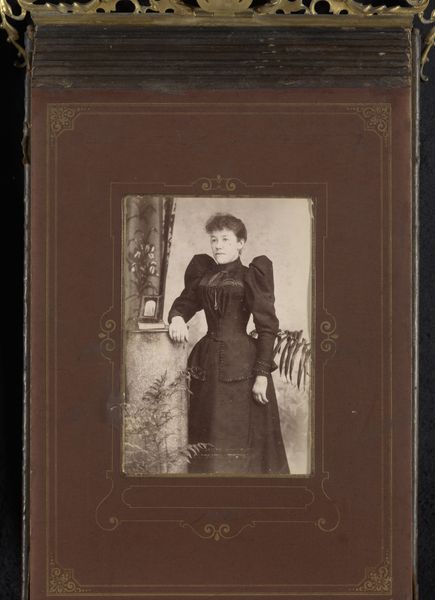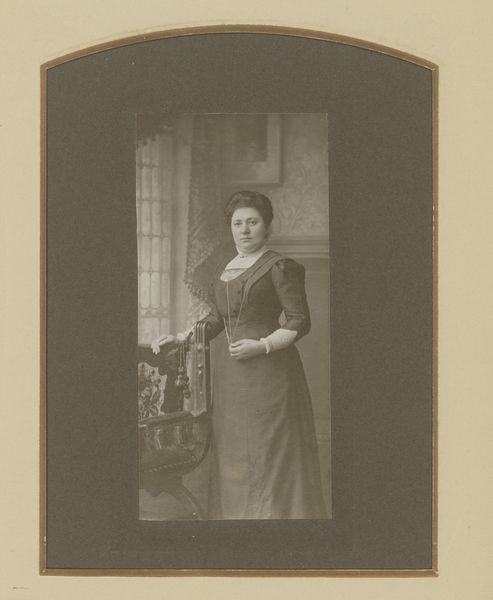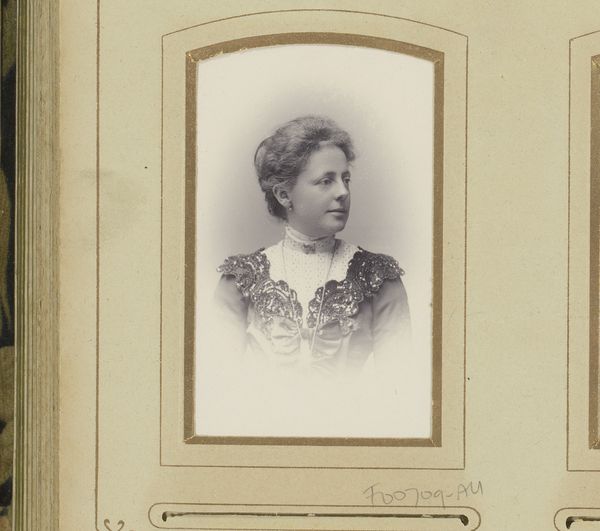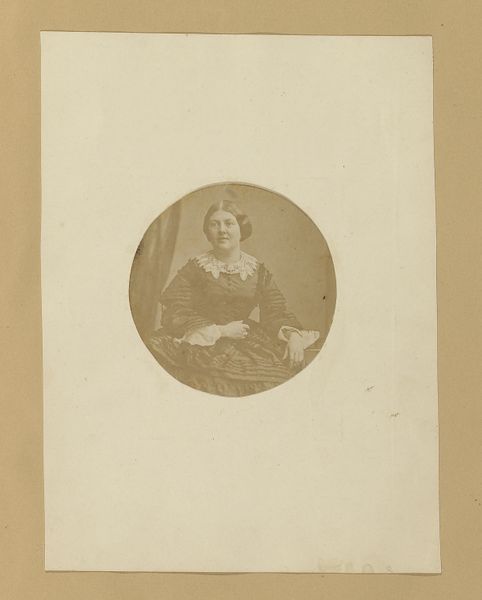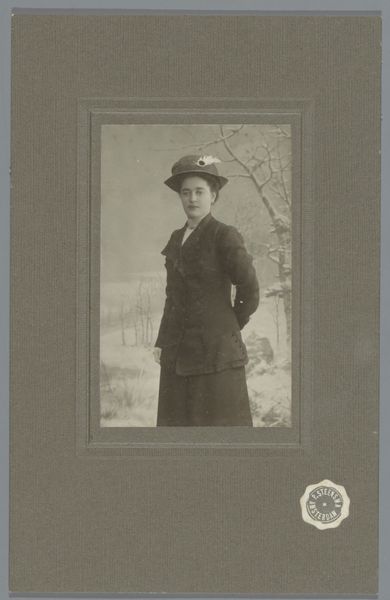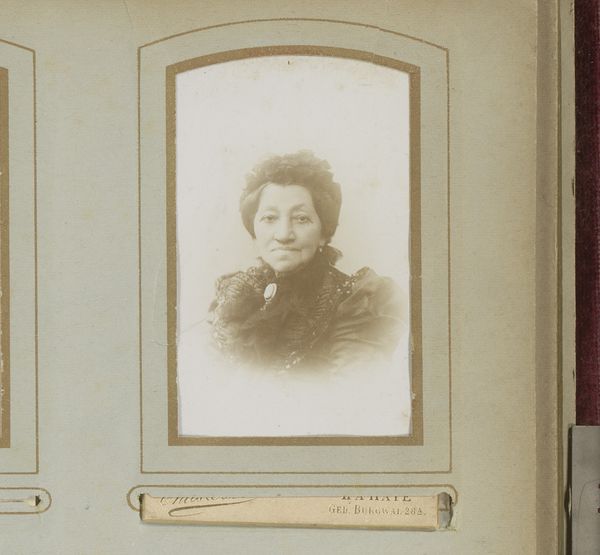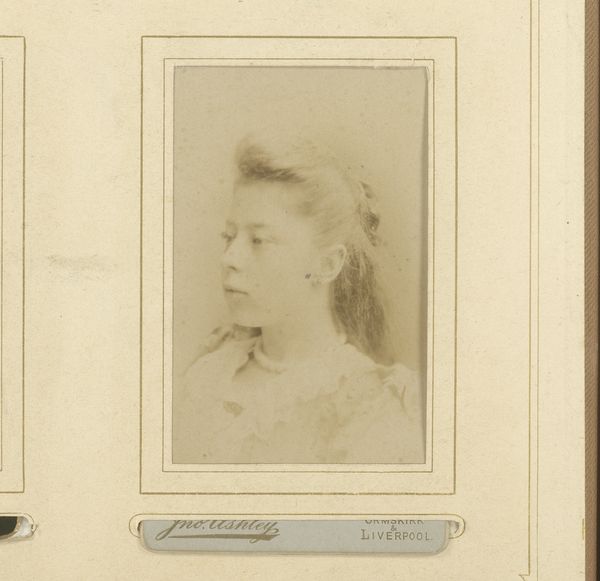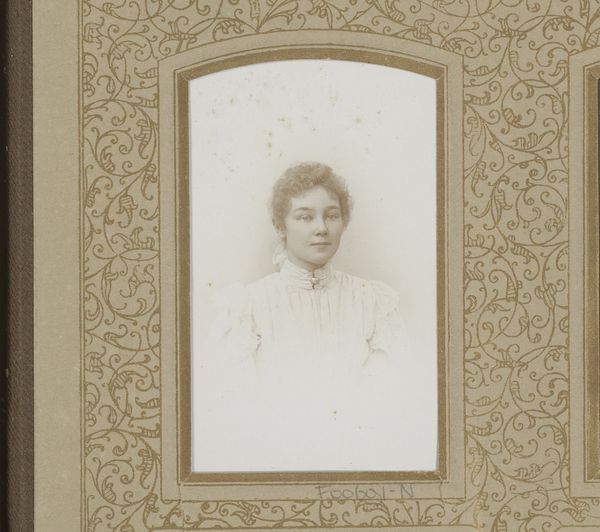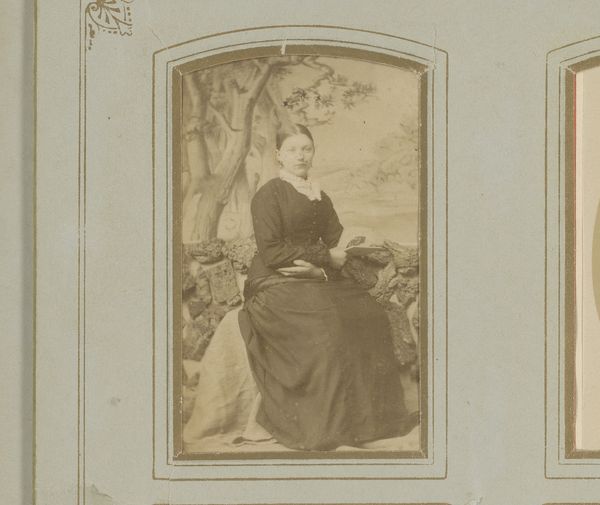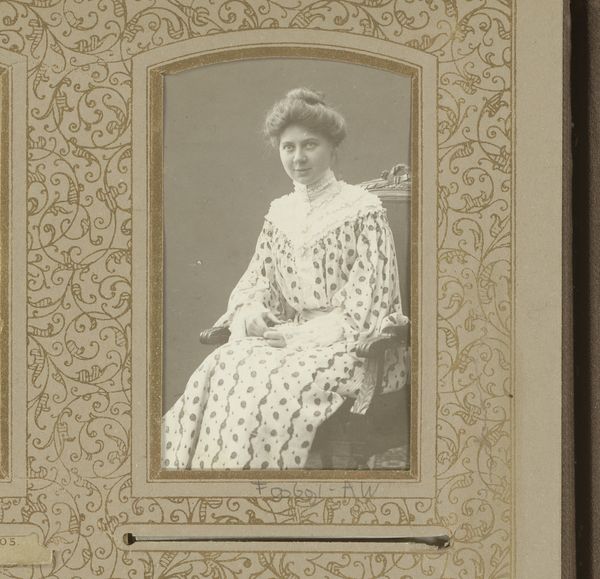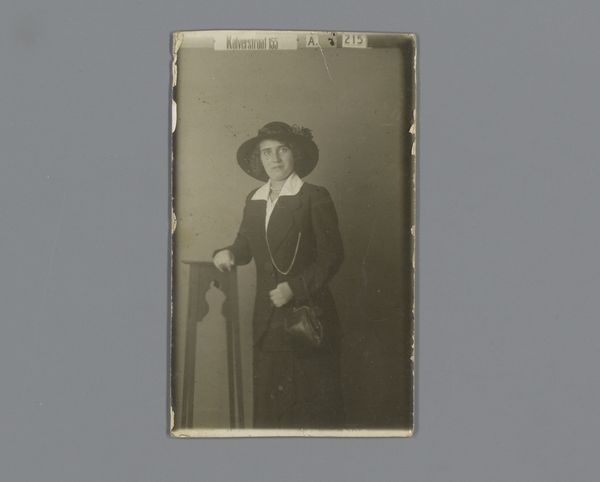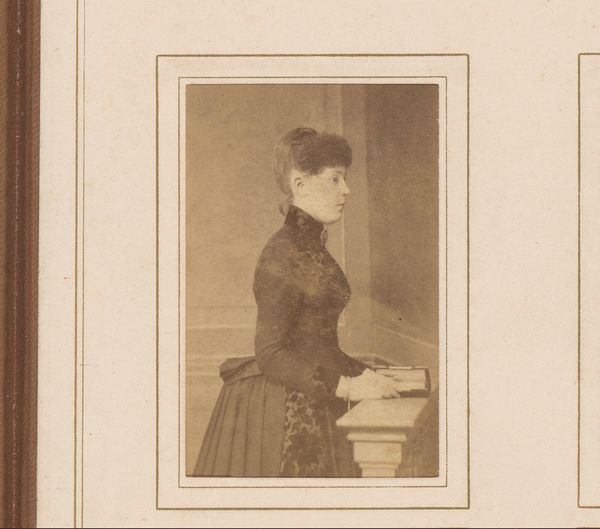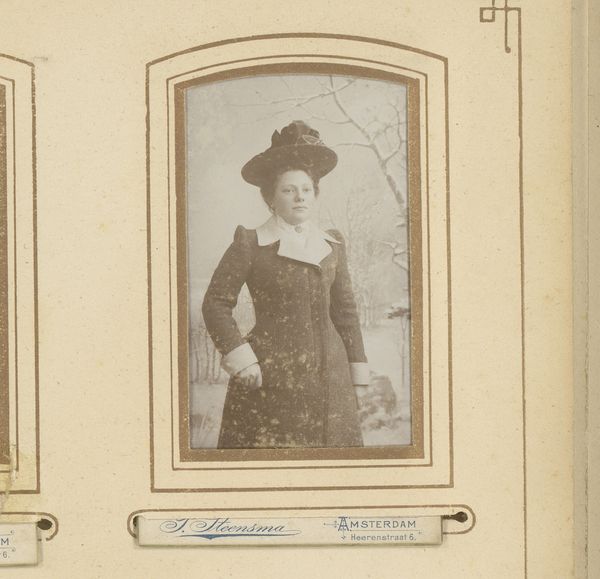
photography, gelatin-silver-print
#
portrait
#
pictorialism
#
photography
#
gelatin-silver-print
#
genre-painting
#
realism
Dimensions: height 80 mm, width 43 mm
Copyright: Rijks Museum: Open Domain
Editor: Here we have "Portrait of a Young Woman Standing by a Chair," a gelatin silver print from between 1900 and 1930 by Broek. It’s such a straightforward image; it almost feels like it's holding something back. What strikes you about this piece? Curator: I’m immediately drawn to the social context implied by the photograph’s very existence. In the early 20th century, photography was becoming more accessible, yet a formal portrait like this still represented a conscious decision, a mark of social aspiration, a claiming of space within the visual culture. It suggests an engagement with societal norms and a desire for representation within those norms. Editor: So, it's more than just a snapshot? It’s making a statement? Curator: Exactly. And consider the sitter’s attire. The somewhat sombre clothing suggests a certain social standing and perhaps a level of restraint dictated by the era’s cultural values. Think about the public role of women at that time and how they were being presented through imagery. Is she trying to project a particular image, and if so, what might that be? Editor: Maybe she's trying to appear respectable or serious? It definitely makes you wonder what her everyday life was like, doesn't it? Curator: It does. Furthermore, the pose, her hand gently resting on the chair, all contributes to the careful construction of an image, influenced, I suspect, by the visual language perpetuated in art galleries and popular imagery of the period. This work presents the politics of portraiture at the turn of the century. Do you think this type of portrait impacted the perception of women? Editor: That’s a really interesting thought. The very act of creating and sharing these images undoubtedly shaped and reinforced specific societal expectations. Thinking about it now, this artwork almost becomes a tool for social commentary in its own right! Curator: Precisely! And by considering these portraits as documents shaped by the era’s values and norms, we can unveil fascinating stories about self-representation, gender roles, and the cultural politics of image-making.
Comments
No comments
Be the first to comment and join the conversation on the ultimate creative platform.
